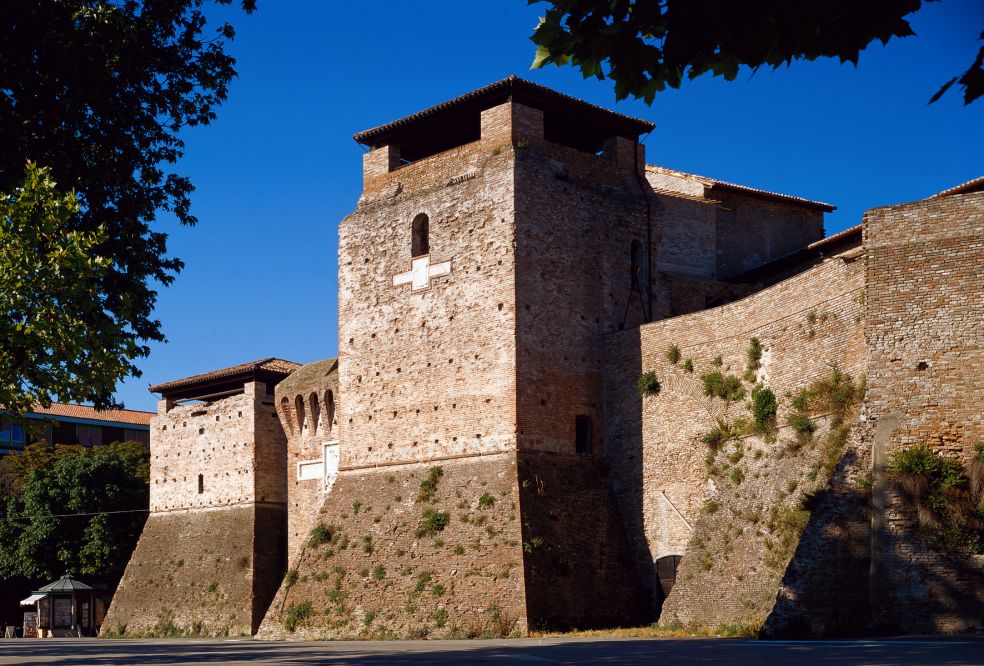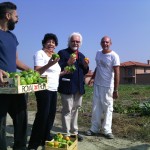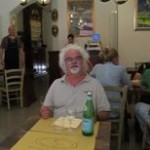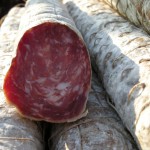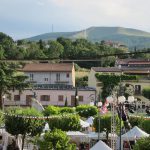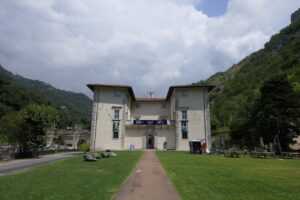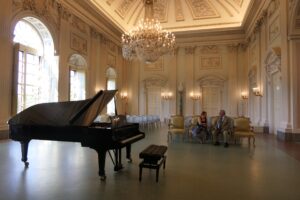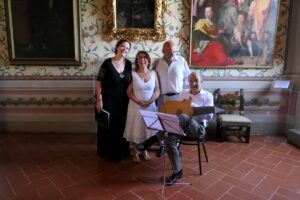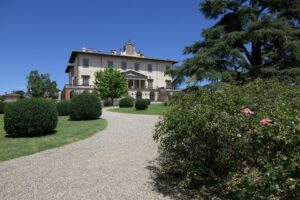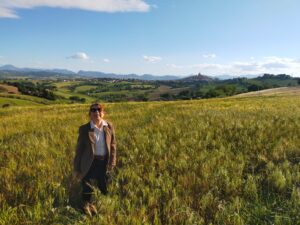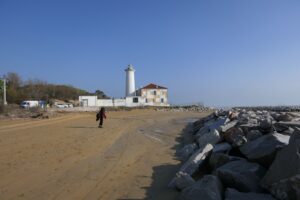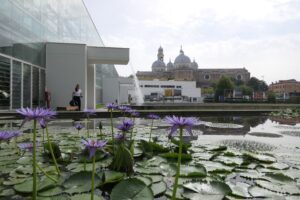A special kind of peppers that you can taste in Oltrepò Pavese
Rimini seen through Fellini’s eye
Start your tour from the old town centre
Visiting a city following the tracks and biography of some local personalities can be very interesting. I mean, Jack The Ripper and London, Antonio Tabucchi and Lisbon, Manuel Vasquez Montalban and Barcelona are some examples. Rimini is the homeland of the Italian film director Federico Fellini and I decided to take a trip to Rimini following his path!
Most of tourists coming to Rimini just stay near the seaside promenade, but I discovered some unknown aspects of this super-touristic city starting my tour by the old town centre. Rimini is famous for entertainment, with its crowded clubs and a funny nightlife, but I discovered that it is also a real town, where people use to born and live! This hidden side of Rimini has nothing to do with seaside resorts and touristic clubs. Fellini’s Rimini is a daydreaming place.
Rimini made Federico Fellini remember about his past, with all his personal aspects that didn’t exist any more, but still living deep in his soul. Some kind of common feeling towards the place of one’s childhood, I think. I run away from my beautiful Mantua when I was eighteen, I totally get it.
Tracing a Fellinian route in Rimini is complicated: he was born and lived here till he was nineteen, all his childhood and youth. This town represents the subject of his creativity, inspiring him in every sense. But Fellini has never shot a movie in Rimini, not even a short sequence!
Borgo San Giuliano
Rimini is a real place that becomes fantasy and art through Fellini’s lens. Exactly the opposite of Disneyland and places like that, where fake landscapes pretend to be reality. Start your slow tour from Borgo San Giuliano, representing the town original identity. San Giuliano was a village settled over the canal, where fishermen, workers and artisans lived. They were poor people with strong identity, sense of rebellion and solidarity. This place celebrates Fellini with some great murals insipred by his movies.
My guides on Fellinian route had been great: Beppe Ricci, archivist of the Fellini Foundation, and Paolo Fabbri, director of the Foundation. I visited the Foundation with them and I brushed up on clips about Fellini. What Fellini said about Rimini can be considered a general overview about Italian provincial life. Who comes from provinces feels often marginal and repressed, but on the other side this situation stimulates imagination and creativity. For an intellectual, then, moving from his small hometown to a great metropolis improves his potentials. This concerns also economy: Italian provinces have always been the fuel of the whole country. That’s why Fellini’s ideas are so interesting.
From Tiberio bridge to Fulgor cinema
From Borgo San Giuliano to Rimini centre, you will cross Tiberio Bridge, an historical bridge built with Istrian stone. It is called Tiberio, but its construction had actually been started under Augustus Emperor. The Bridge marks the beginning of the famous Via Emilia.
Then you will pass along the Church of the Servants, a cold and dark church that scared Fellini a lot, when he was a teenager. There is an unforgettable story about it: Bedassi spent a whole night into this church in return for 10 lire, one kilo of lupins and two sausages! In the morning he was snoring inside the confessional and he was sleeping so peacefully that he thought to be at home… talking to the sexton who discovered him there, he asked something like “Mom where is my coffee?”.
Going ahead Corso Augusto there is the Cinema Fulgor. Every year thousands of people come here, because it is the place where Fellini watched a movie for the very first time, with his dad. The movie was “Maciste all’Inferno” (as mentioned in “Roma”). Some years later, Fellini tried here to seduce Gradisca (as mentioned in “Amarcord”).
From Sigismondo square to Cavour square
Castel Sismondo square should be named Sigismondo, because Sigismondo Pandolfo Malatesta had it built in the 15th century. The castle is worth to be visited and Fellini shot a scene here: in his movie about clowns, the circus stands just in front of the castle! Fellini loved the circus and it seems he had decided to work in the show business just because of this.
Cavour square is one of the most important and beautiful squares in Rimini. Fellini talked several times about Cavour square and he often used it as a set. He was able to recreate the whole square at Cinecittà (Rome movie studios). There is a scene taking place here in “Amarcord”, where it was snowing and a peacock was standing on the fountain.
The typical communicativeness of people from Romagna is a part still living of Fellini’s imaginary. He duplicated reality, his relationship with locals has always been very intense.
Victory B side and Grand Hotel
Ferrari square is a required stop. There is a monument to the First World War local fallens, realized during the 20s and unveiled by King Vittorio Emanuele III. The main point of this monument is the backside of a woman: a huge bottom, right there! Fellini mentioned it in “Amarcord”, he added only a pair of wings. This bottom had a strong role in teenager Fellini’s sexual development!
Rimini means also irony, hyperbole, grotesque.
Fellini shot several unforgettable scenes in front of Paolotti Chapel (recreated at Cinecittà, in Rome). For example the story of Sant’Antonio, who had been able to convert an heretic making a hungry mule to prefer his sacramental bread instead of some fodder.
The Grand Hotel is a must see, of course. Once I had the opportunity to spend a night here, but you can walk in the park or take a look at the hall and it will be still worthy! This is the place symbol of Vitelloni’s transgressions, or the Califfo’s harem. Unfortunately, it is also the place where Fellini was stricken by cerebral hemorrhage.
Where did Fellini live?
Fellini’s native house was in Via Dardanelli 10. From that period, house numbering changed, so it is impossible to identify where exactly Fellini was born.
Towards the railway station there is his house, address Via Dante 9. His first fiancée Bianchina used to live next and, as the story goes, they used to catch up each other passing through a window…
The last Fellini’s house in Rimini is his grave, at the local graveyard. A monumental grave built by Arnaldo Pomodoro. Fellini lies here together with Giulietta Masina and their little child Pier Federico, who lived only for a few days. I decided not to go there, because I didn’t want to finish our route so sadly.
Patrizio
Main pic and pic of Borgo San Giuliano courtesy of Flicrk User ZioWoody
Castel Sismondo pic courtesy of Flickr User Turismo Emilia Romagna


